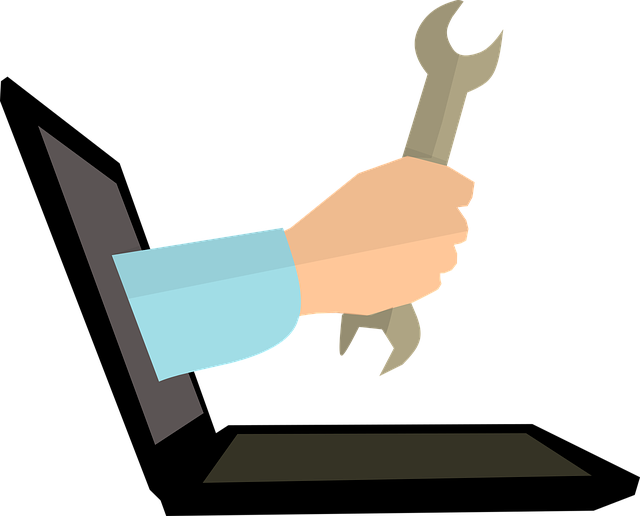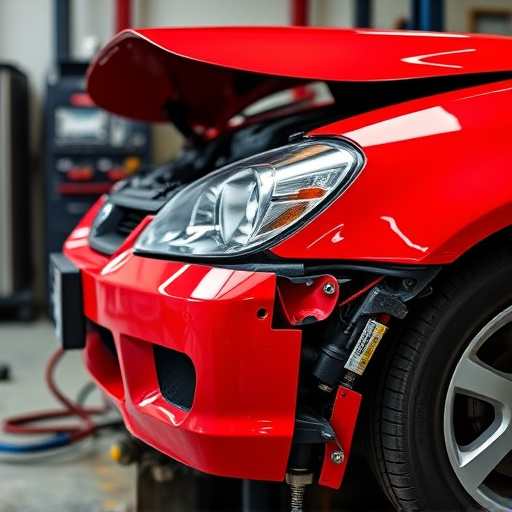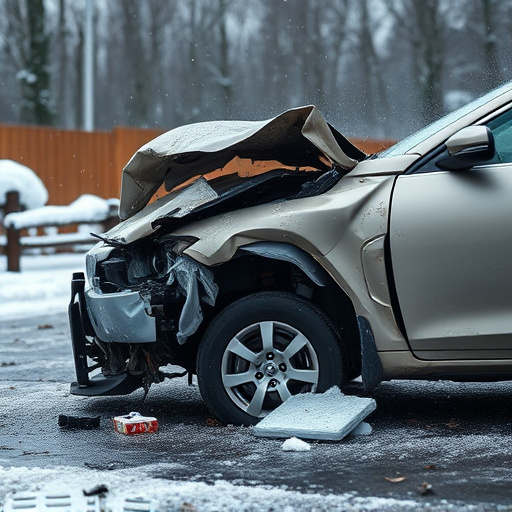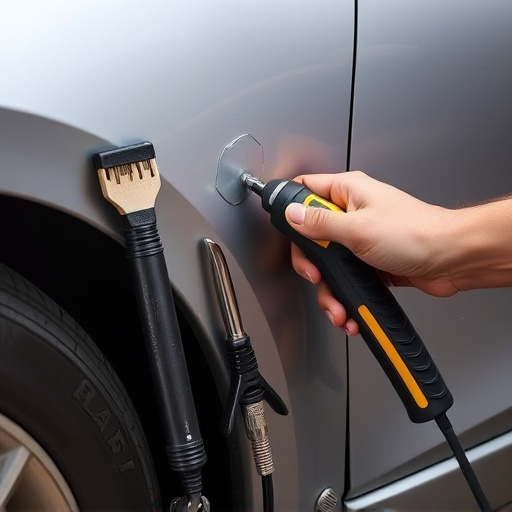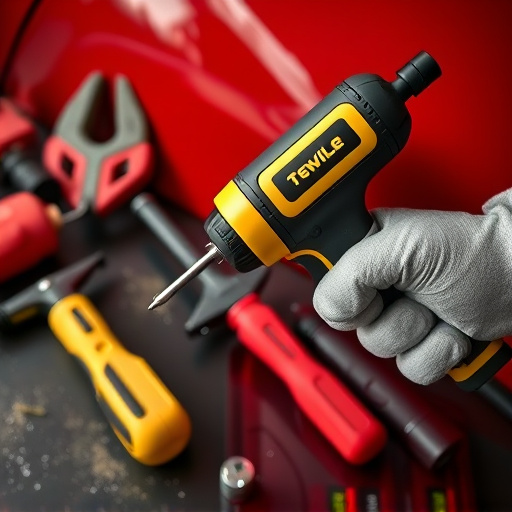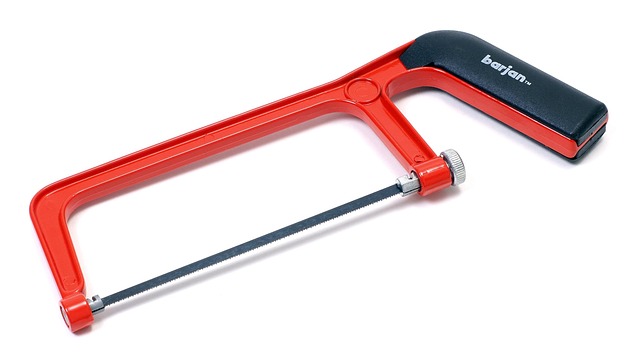Frame damage assessment is a critical legal process for car owners post-collision, ensuring vehicle safety and accurate repair. Experts use advanced tools to detect bending, cracks, or misalignments in frame components like unibody or chassis. Skipping these assessments can lead to legal disputes, delays, and liability for all parties involved. Modern techniques include laser scanners and CAD software for precise measurements, along with equipment for thorough inspection of safety features, ensuring cost-effective repairs while restoring vehicle integrity.
Post-collision frame damage assessment is an essential legal requirement often overlooked. Ignoring it can have significant consequences, from inaccurate repair estimates to potential insurance claims denial. This article delves into the importance of thorough frame damage assessment, exploring both its technical aspects and legal implications. We’ll also highlight effective methods for comprehensive frame damage assessment, empowering you to navigate post-collision scenarios with confidence and ensure fair repairs.
- Understanding Post-Collision Frame Damage Assessment
- Legal Implications of Skipping Frame Damage Assessments
- Effective Methods for Comprehensive Frame Damage Assessment
Understanding Post-Collision Frame Damage Assessment

Post-collision frame damage assessment is a crucial process that helps identify and evaluate the structural integrity of a vehicle after a crash. It goes beyond visual inspection, involving detailed measurements and advanced techniques to determine if the frame has been compromised. This assessment is legally recommended because it ensures that owners receive accurate information about their vehicle’s safety and repair needs.
By employing professional car repair services or visiting a reliable vehicle body shop, owners can have their vehicles thoroughly examined. These expert mechanics use specialized tools to analyze key components of the frame, such as the unibody or chassis, for any signs of bending, cracking, or misalignment. The findings guide the decision-making process in terms of whether to proceed with repairs or consider a total replacement, ensuring the safety and reliability of the vehicle on the road.
Legal Implications of Skipping Frame Damage Assessments

Skipping frame damage assessments can have significant legal implications for all parties involved, from insurance companies to policyholders and collision repair facilities. In many jurisdictions, comprehensive vehicle inspections are legally required after a collision, especially if the accident causes visible or structural damage. Failing to conduct these assessments can lead to disputes over the extent of damage, which may result in delayed settlements and even legal action. Insurance providers often rely on thorough frame damage assessments to underwrite policies accurately and fairly.
Moreover, auto repair services that omit this critical step may be held liable for any subsequent issues arising from incomplete or inaccurate repairs. Collision repair experts emphasize the importance of these evaluations not just for financial accuracy but also for ensuring safety. Proper frame damage assessment is a cornerstone of quality auto body services, facilitating efficient repairs and restoring vehicles to their pre-accident condition.
Effective Methods for Comprehensive Frame Damage Assessment

Effective methods for comprehensive frame damage assessment involve a meticulous inspection process that goes beyond visual observations. Modern collision repair shops utilize advanced technologies such as laser scanners and computer-aided design (CAD) software to accurately measure and document any discrepancies in the vehicle’s structural integrity. These tools enable precise identification of hidden dents, cracks, or deformations, ensuring no damage goes unnoticed.
During the assessment, trained professionals carefully examine every corner and component of the frame, including the chassis, suspension systems, and safety features. This thorough approach, often combined with specialized equipment like hydraulic jacks and alignment machines, facilitates accurate diagnosis of issues that might require fender repair or more complex structural adjustments. Such comprehensive assessments are vital in determining the scope of necessary repairs, ensuring both safety and cost-effectiveness for collision victims.
Post-collision frame damage assessment is not just a recommended practice, but a legally sound strategy to ensure thorough vehicle inspection and safety. By employing effective methods outlined in this article, such as utilizing advanced technology and expert knowledge, individuals and businesses can navigate the legal implications of skipping these assessments, ultimately fostering a culture of accountability and responsible vehicle maintenance. Comprehensive frame damage assessment is key to mitigating risks, preventing accidents, and upholding legal standards.
